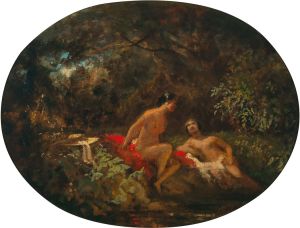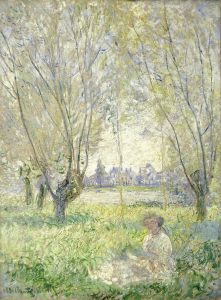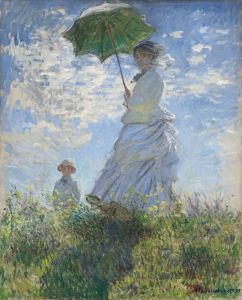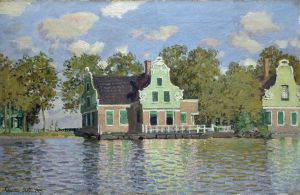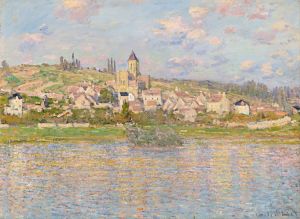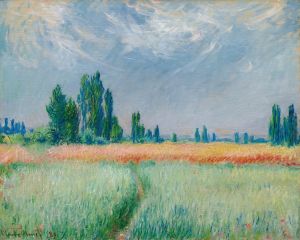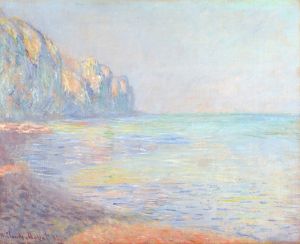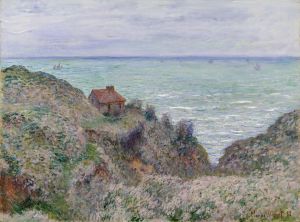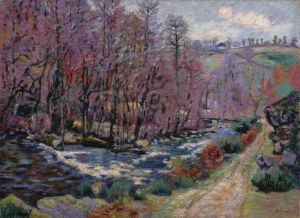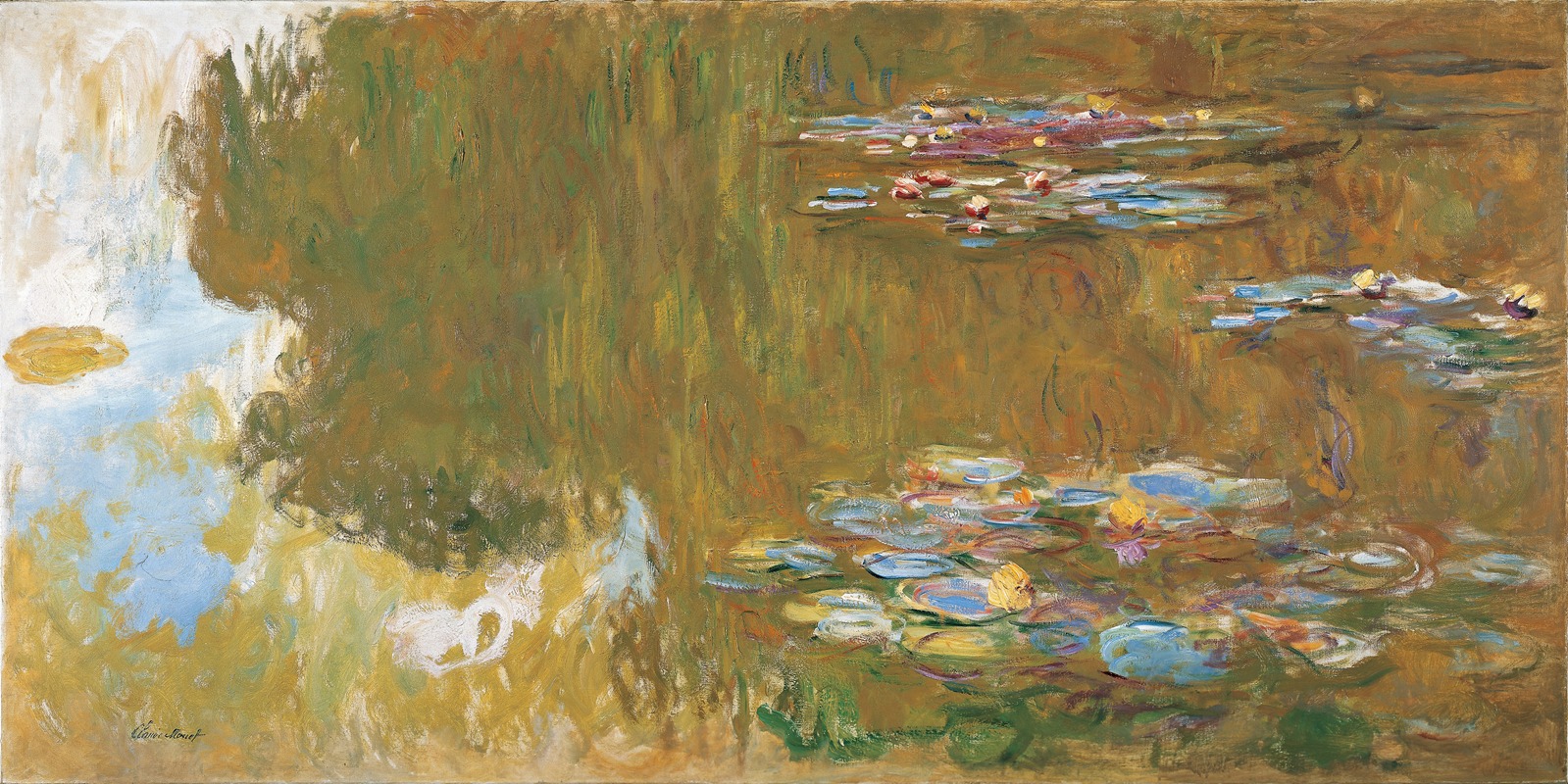
The Water Lily Pond, c. 1917-19
A hand-painted replica of Claude Monet’s masterpiece The Water Lily Pond, c. 1917-19, meticulously crafted by professional artists to capture the true essence of the original. Each piece is created with museum-quality canvas and rare mineral pigments, carefully painted by experienced artists with delicate brushstrokes and rich, layered colors to perfectly recreate the texture of the original artwork. Unlike machine-printed reproductions, this hand-painted version brings the painting to life, infused with the artist’s emotions and skill in every stroke. Whether for personal collection or home decoration, it instantly elevates the artistic atmosphere of any space.
"The Water Lily Pond" is a painting by the renowned French artist Claude Monet, created between 1917 and 1919. Monet, a leading figure in the Impressionist movement, is celebrated for his innovative use of color and light, and his ability to capture the transient effects of nature. This painting is part of a larger series of works focused on the water lilies in the garden of his home in Giverny, France.
Monet moved to Giverny in 1883 and began developing his famous garden, which included a water lily pond that became the primary inspiration for many of his later works. By the time he painted "The Water Lily Pond," Monet had already spent decades perfecting his technique and exploring the interplay of light, water, and plant life.
"The Water Lily Pond" is characterized by its vibrant color palette and the serene, almost dreamlike quality of the scene. Monet's brushwork in this painting is loose and fluid, capturing the reflections of the sky and surrounding foliage on the surface of the pond. The water lilies themselves are depicted with delicate, yet confident strokes, floating effortlessly on the water's surface.
This painting, like many in the water lily series, reflects Monet's fascination with the changing qualities of light and his desire to capture the essence of a moment in time. The composition is carefully balanced, with the pond occupying the majority of the canvas, creating a sense of depth and tranquility. The use of color is particularly striking, with shades of green, blue, pink, and white blending harmoniously to create a cohesive and immersive scene.
Monet's water lily paintings were not only a personal passion but also a significant contribution to the art world. They represent a departure from traditional landscape painting, emphasizing the importance of perception and the artist's subjective experience. These works are often seen as precursors to abstract art, as they focus more on the overall impression and emotional impact rather than precise detail.
"The Water Lily Pond" is housed in various collections around the world, with some of Monet's water lily paintings residing in prestigious institutions such as the Musée de l'Orangerie in Paris, the Metropolitan Museum of Art in New York, and the National Gallery in London. These paintings continue to be celebrated for their beauty and innovation, attracting art lovers and scholars alike.
Monet's dedication to his garden and his water lily series was unwavering, even as he faced personal challenges, including deteriorating eyesight due to cataracts. Despite these difficulties, he continued to paint, driven by his passion for capturing the fleeting beauty of nature.
In summary, "The Water Lily Pond" by Claude Monet is a testament to the artist's mastery of color, light, and composition. It reflects his deep connection to his garden in Giverny and his enduring legacy as a pioneer of the Impressionist movement. This painting, along with the rest of the water lily series, remains a beloved and influential work in the history of art.





